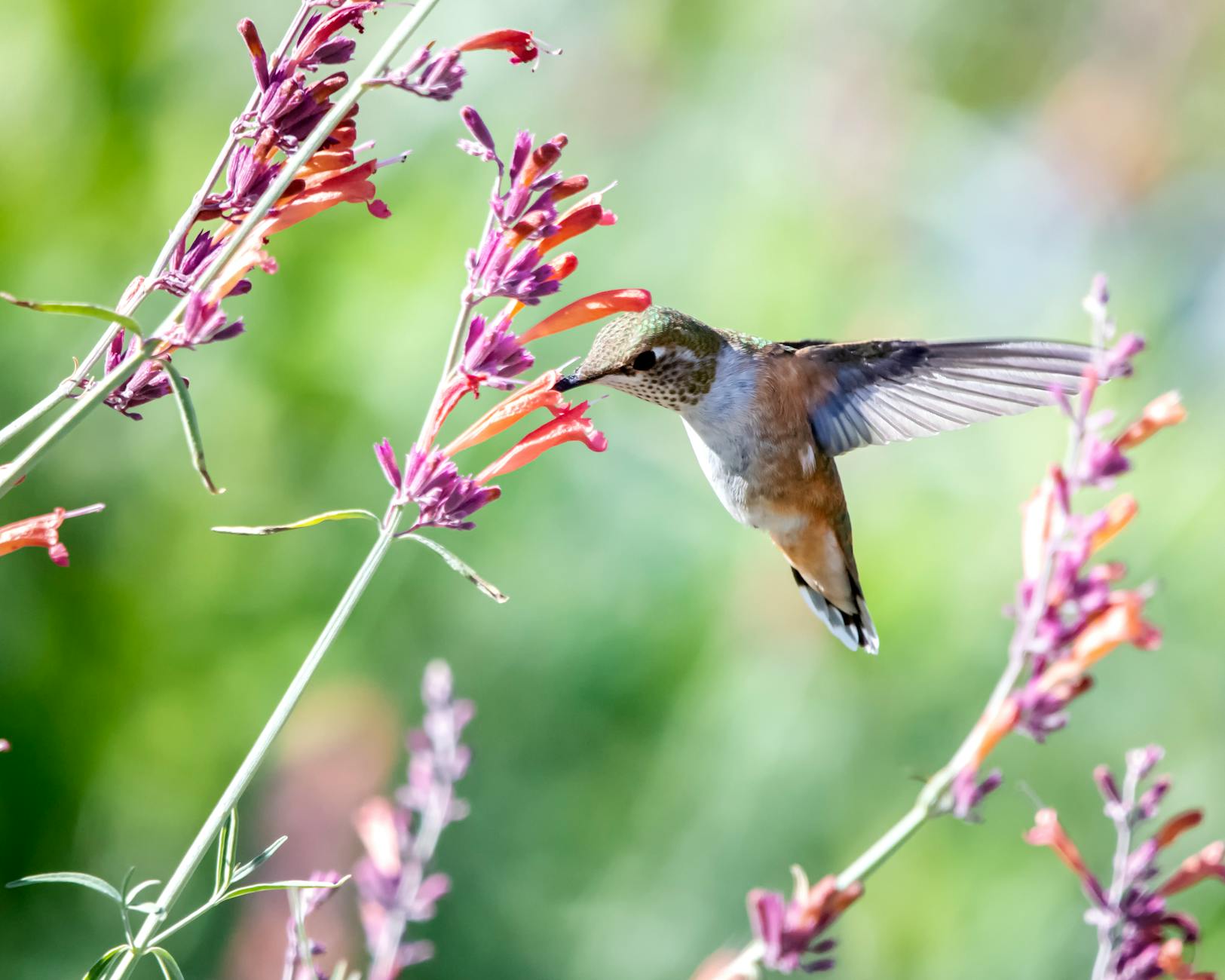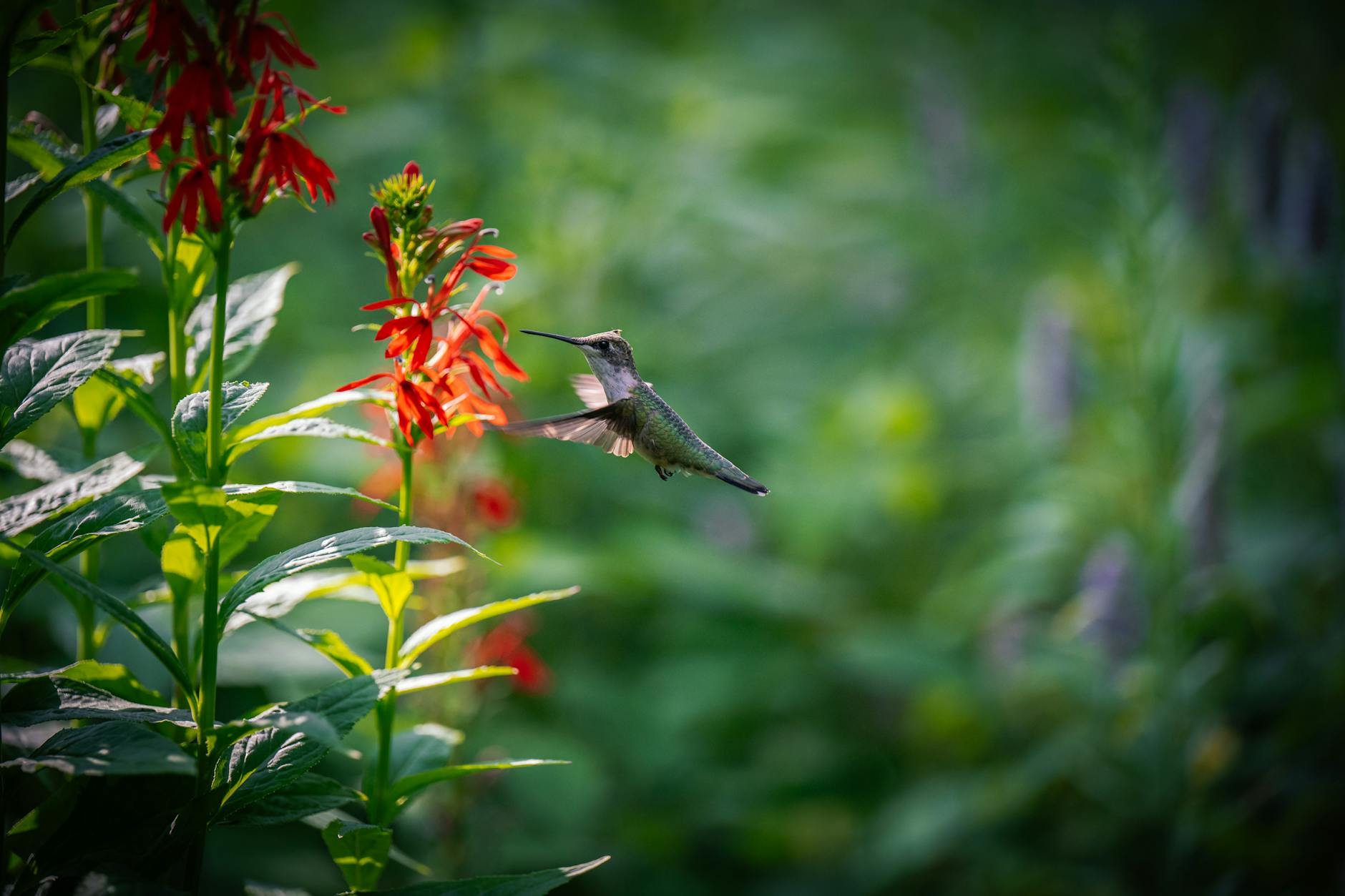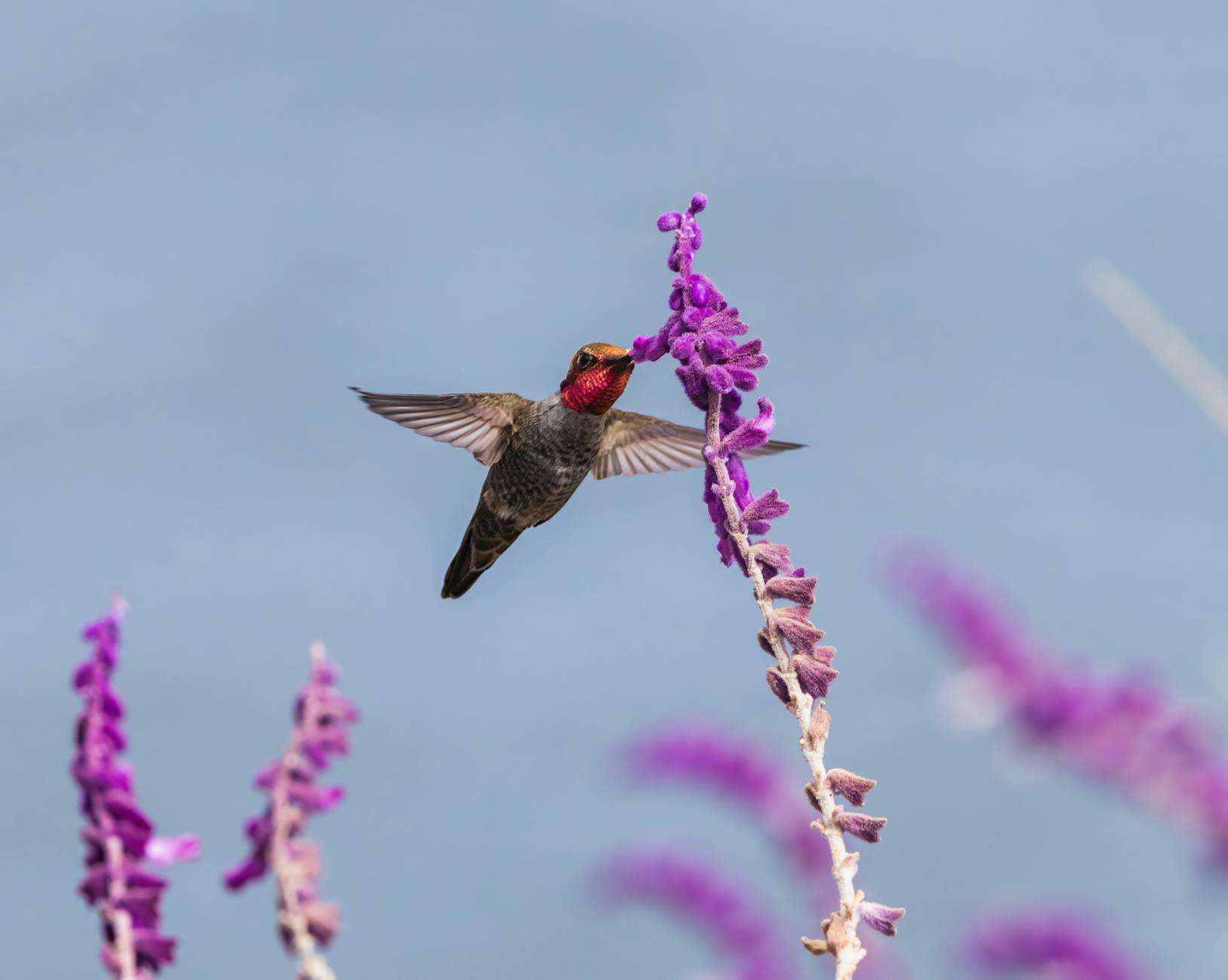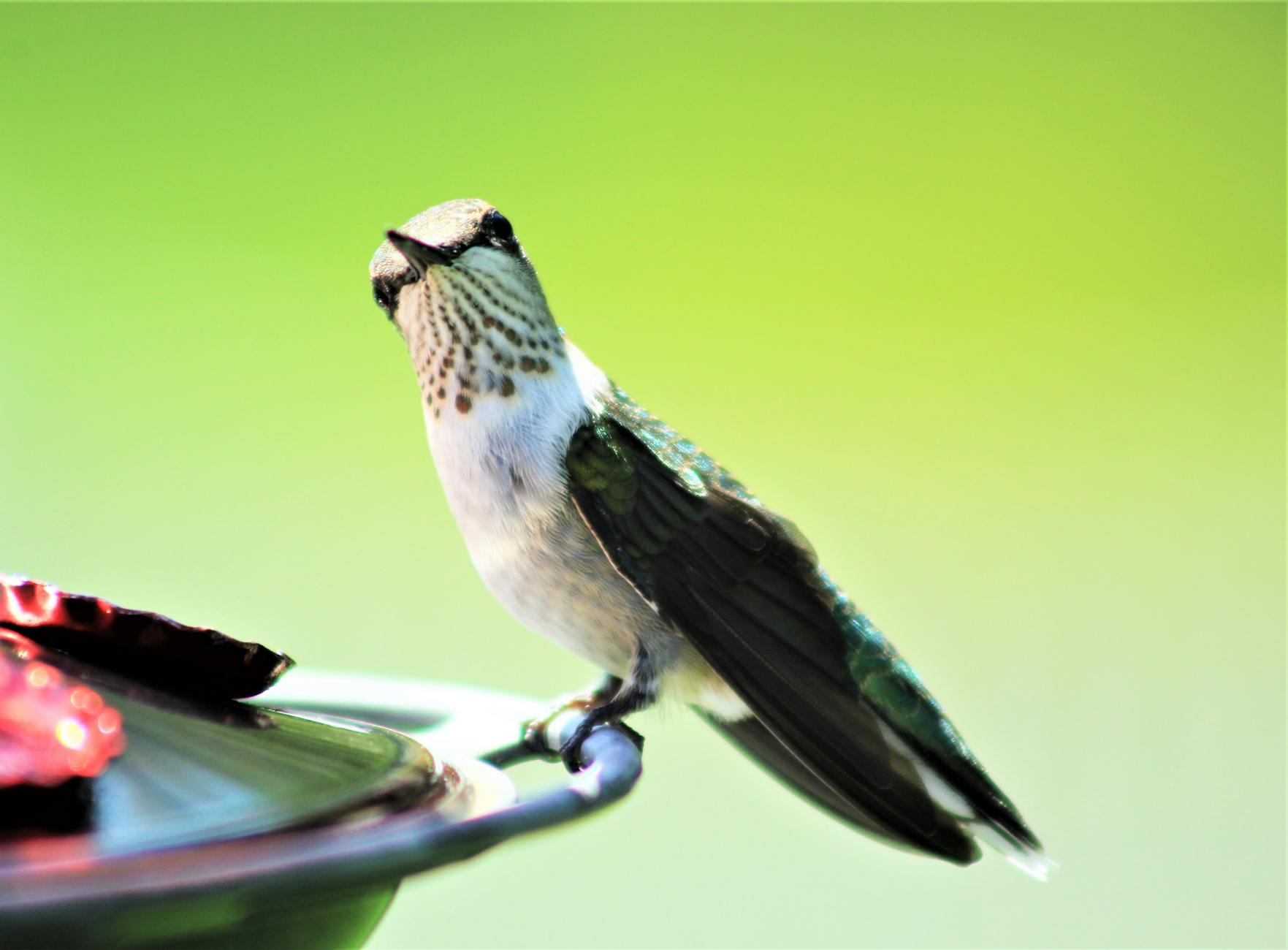15 Fascinating Hummingbird Facts You Probably Didn’t Know
Hummingbirds are more than just tiny, colorful wonders flitting through gardens. These birds defy expectations with their speed, agility, and unique traits. From their astonishing heart rates to their incredible migration journeys, hummingbirds continue to amaze scientists and bird lovers alike. Get ready to uncover surprising truths about these feathered marvels that make them one of nature’s most fascinating creatures.
Unique Physical Features of Hummingbirds
Hummingbirds stand out as some of the most extraordinary creatures in the animal kingdom. Their anatomy and abilities are nothing short of remarkable, enabling them to thrive in environments where other birds might struggle. Below, we’ll explore some distinctive physical features that make these tiny wonders so fascinating.
Size and Weight
Hummingbirds are the smallest birds in the world, and their size is a defining characteristic. These birds typically range in weight from 2 to 20 grams, comparable to that of a small coin. The smallest among them, the bee hummingbird, weighs less than 2 grams—about the weight of a dime. Despite their diminutive size, their energy levels are massive, requiring them to consume up to twice their body weight in food daily. Small but mighty indeed!
Learn more about their tiny size and weight here.
Color Vision
Hummingbirds don’t just see the world—we could argue they see beyond it. They have an exceptional ability to perceive colors, far surpassing human vision. While humans can see red, green, and blue light, hummingbirds have an additional ultraviolet color cone, enabling them to detect colors we can’t even imagine, like UV+red or UV+green. This advanced vision helps them locate nectar-rich flowers and avoid unproductive blooms. Think of it as a built-in, high-tech color scanner!
Dive into their amazing spectrum of vision here.
Wing Structure and Flight
One of the most astounding features of hummingbirds is their wing structure, which allows for unparalleled flight abilities. Unlike other birds, the ball-and-socket joint at their shoulders enables a full 360-degree rotation of their wings. This feature allows them to hover, fly backward, and even move sideways. Their wings beat at an incredible speed—between 50 to 80 times per second—creating the humming sound that gives them their name. The precision and agility of their flight are unmatched, like nature’s tiny helicopters!
Read about their unique aerodynamics here.

Photo by Frank Cone.
Beak Adaptations
Hummingbird beaks are like customized tools, each uniquely adapted to suit their feeding needs. Their long, slender beaks are perfect for accessing nectar deep within tubular flowers. However, not all hummingbird beaks look the same—some species have curved or slightly longer beaks tailored for specific flowers in their habitat. This specialized design minimizes competition and optimizes feeding efficiency. It’s like having the right key for a set of unique locks in nature’s pantry.
For more on their adaptations, check this link.
These physical characteristics are just a glimpse into what makes hummingbirds such marvels of nature. They may be small, but they pack a giant punch when it comes to adaptation and survival!
Fascinating Behaviors of Hummingbirds
Hummingbirds may be small, but their behaviors reveal remarkable intelligence and determination. From their epic travels to their feeding quirks, every action serves a purpose in their survival. Let’s take a closer look.
Migration Patterns
Hummingbirds undertake some of the most impressive migrations in the animal kingdom. These tiny travelers journey thousands of miles, often flying up to 500 miles non-stop across open waters like the Gulf of Mexico. Species like the Ruby-throated Hummingbird make annual migrations between Central America and North America, relying on innate navigation skills and sheer endurance. Many of these tiny flyers return to the exact same location year after year, a feat that continues to amaze researchers.
Learn more about their epic migration journeys here.
 Photo by Chris F.
Photo by Chris F.
Territorial Nature
If you’ve ever set up a hummingbird feeder, you’ve probably noticed the birds’ territorial instincts. Male hummingbirds are notorious for guarding their feeding territories with an iron will. They’ll chase off intruders with aggressive swoops and sharp chirps, protecting valuable food sources like nectar-filled flowers and feeders. This behavior often looks playful, but it’s survival-driven. A hummingbird must guard its food to sustain its rapid metabolism. Think of them as nature’s tireless bodyguards—small but fierce!
Discover why hummingbirds are so feisty here.
Memory Skills
Hummingbirds are not just fast—they’re also exceptionally smart. Their tiny brains hold a complex spatial memory system that allows them to remember the exact locations of feeders and flowers, as well as when these replenish with nectar. Studies even suggest they can differentiate between identical flowers and recall which offered more nectar. It’s like they carry a mental map, ensuring their energy isn’t wasted. In the world of birds, their memory capacity could rival even some primates.
Dive deeper into their sharp memory abilities here.
Feeding Habits
A hummingbird’s diet isn’t as simple as sipping nectar. These birds also consume protein-rich insects like gnats, spiders, and fruit flies. Nectar serves as their energy drink, fueling their rapid wingbeats, while insects provide essential nutrients for survival. Remarkably, they eat up to half their body weight in food each day. Watching one gather nectar is mesmerizing; their long tongues work like tiny straws, perfectly adapted to draw nutrition from flowers.
Explore what hummingbirds eat and why it matters here.
Through fascinating behaviors such as precise navigation, territorial defending, and efficient feeding, hummingbirds demonstrate that even the tiniest creatures can be full of surprises.
Hummingbird Species
Hummingbirds come in many shapes and sizes, each with unique traits that make them fascinating creatures. Here, we’ll explore a few remarkable species that shine in their own unique ways.
The Bee Hummingbird: Highlight the world’s smallest bird and its remarkable characteristics
The Bee Hummingbird (Mellisuga helenae), found in Cuba and its surrounding islands, is a marvel of nature. As the world’s smallest bird, it measures just 2.25 inches in length and weighs less than 2 grams—lighter than a U.S. penny. Despite its size, it’s a vibrant masterpiece, with males sporting fiery red caps and iridescent blue backs. Their wings beat an incredible 80 times per second, allowing them to hover like tiny helicopters while sipping nectar.
Interestingly, these birds are often mistaken for insects due to their diminutive size and buzzing flight. However, their solitary and territorial behavior reminds us that they are every bit the bird they’re named after. They typically favor dense shrubs and flowers for feeding, emphasizing how even the smallest creatures demand their space.
Learn more about the Bee Hummingbird’s unique traits here.

Photo by Robert So.
Ruby-Throated Hummingbird: Describe the most common hummingbird in North America
The Ruby-Throated Hummingbird (Archilochus colubris) reigns as the most widespread hummingbird species in eastern North America. Their shimmering green feathers and males’ distinctive ruby-red throats make them a striking sight. These birds are not only beautiful but also skilled long-distance flyers, migrating annually between North America and Central America—a journey that includes a 500-mile nonstop flight over the Gulf of Mexico.
You’re most likely to come across Ruby-throated Hummingbirds in gardens, parks, and woodlands, where feeders and flowers attract them. They’re quick, agile, and capable of flapping their wings more than 50 times per second. This speed is critical as they hover to collect nectar or defend their territory from rivals.
Discover more about the Ruby-Throated Hummingbird here.
Anna’s Hummingbird: Discuss its adaptability to urban environments
Anna’s Hummingbird (Calypte anna) is a symbol of adaptability. Native to the western United States, this species has expanded its range to urban areas, thriving in gardens, parks, and even city balconies. Their resilience is attributed to their ability to feed on ornamental plants, thanks to urban flower gardens and hummingbird feeders.
What’s unique is their year-round residency—even in colder climates. You might spot one in the winter, fluffing up its feathers for warmth. Males are known for their dramatic courtship displays, where they swoop up to 130 feet in the air before plummeting back, producing a sharp chirp with their tail feathers. This dedication to survival and reproduction keeps them flourishing in diverse habitats.
Learn about Anna’s Hummingbird’s urban adaptability here.
Each of these species showcases just how diverse and captivating hummingbirds can be. From the tiniest Bee Hummingbird to the flashy Ruby-Throated and adaptable Anna’s, these birds continue to enchant and amaze us.
Cultural Significance of Hummingbirds
Hummingbirds captivate us not just for their physical beauty but also for their cultural impact. Across ages, these tiny birds have been woven into the stories, art, and imagination of people around the world.
Symbolism in Mythology
Hummingbirds hold profound symbolic importance in many cultures, often representing happiness, hope, or eternal love. In Mesoamerican traditions, hummingbirds were regarded as messengers from the gods or even bearers of souls. For the Aztecs, warriors who perished in battle were believed to return as hummingbirds, signifying their bravery and connection to the divine. Their relentless, darting flights were seen as echoes of heroic journeys from the afterlife.
The Inca civilization also held hummingbirds in high esteem as celestial messengers, with their swift movements signifying a link between heaven and earth. This perspective resonated with the pattern created by their flapping wings, which some describe as resembling the symbol for infinity. Across Native American folklore, they are seen as bearers of good health, joy, and even luck.
Explore the mythological roles of hummingbirds in various cultures here and here.
Hummingbirds in Art and Literature
Artists and authors have long been captivated by the charm and symbolism of hummingbirds. Their intricate beauty, almost surreal in its detail, often serves as a metaphor for fleeting moments, delicacy, or the vibrancy of life. Victorian-era naturalists, such as John Gould, were enamored with capturing the elegance of hummingbirds in hand-colored lithographs. These works are now celebrated as some of the finest examples of ornithological illustration.
In literature, hummingbirds appear frequently as symbols of little yet powerful joys. For example, they signify hope and persistence, especially in the face of challenges. Modern artists from Mayan culture, like Richie Morales, continue to feature hummingbirds in their work, connecting the historical beliefs of the species to modern themes of resilience and memory.
Dive deeper into artistic and literary portrayals of hummingbirds here and here.
Hummingbirds serve as much more than ornaments of nature; they are cultural icons, reflecting both the human creative spirit and our desire to connect with the spiritual world.
Conservation and Protection
Hummingbirds are not just mesmerizing with their iridescent colors and rapid wingbeats—they are also vital for ecosystems as pollinators. However, these small birds face significant challenges in today’s world. Let’s explore the threats they encounter and how you can make a difference by welcoming them into your garden.
Threats to Hummingbirds
Despite their beauty, hummingbirds are under threat due to human activity and environmental changes.
One of the most pressing concerns for hummingbirds is habitat loss. Expanding agriculture, deforestation, and urbanization strip away the natural forests and flowering plants that hummingbirds rely on for food and shelter. Without these nectar-rich habitats, their survival becomes jeopardized. Imagine losing a home overnight—this is the reality for many of these tiny wonders.
Then there’s climate change, which compounds the problem. Rising temperatures and shifting weather patterns interfere with flowering cycles, leaving fewer nectar sources when hummingbirds need them the most. Additionally, extreme weather events like hurricanes can destroy essential habitats, especially in migration corridors.
A stark example is the Rufous Hummingbird, whose range is contracting due to these combined pressures. To prevent further losses, efforts toward protecting and restoring habitats are more critical than ever. Curious about conservation efforts? Learn more about ongoing initiatives here.
How to Attract Hummingbirds
You don’t need a sprawling forest to help hummingbirds thrive. A hummingbird-friendly garden can make a real difference by providing a reliable source of food and shelter.
Here are some tips:
- Plant native flowers: Native, nectar-rich flowers are hummingbird favorites. Look for red or orange tubular blooms like bee balm, trumpet vine, or fuchsias.
- Offer sugar-water feeders: Prepare a simple nectar solution with 1 part sugar to 4 parts water, and skip the red dye—it’s unnecessary and potentially harmful.
- Keep feeders clean: Hummingbirds rely on fresh nectar. Dirty feeders can harbor harmful mold, so clean them weekly.
- Avoid pesticides: Chemicals can harm both flowers and insects, depriving hummingbirds of essential nectar and food.
- Provide shelter: Incorporate shrubs and small trees where hummingbirds can rest or nest peacefully.
With a little effort, your garden can become a vital stop for these beautiful birds. For more detailed instructions on creating a hummingbird haven, explore this guide here.
 Photo by Karen F
Photo by Karen F
By making small changes in your garden, you contribute to a larger effort to sustain hummingbird populations. While these tiny birds may seem fragile, they rely on collective actions to thrive in an ever-changing world.
Conclusion
Hummingbirds are proof that the smallest creatures can carry the biggest surprises. Their unique physical traits, fascinating behaviors, and cultural significance reveal a bird unlike any other.
These tiny marvels don’t just captivate our hearts—they play a crucial role in pollination and biodiversity. Understanding their habits and challenges is the first step in protecting them.
What will you do to ensure these incredible birds thrive for generations to come? Share your favorite hummingbird facts and start a conversation about their importance today.










